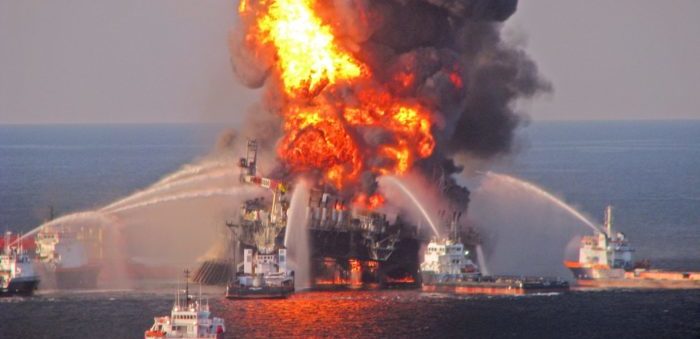On May 2, the US Department of the Interior’s (DOI) Bureau of Safety and Environmental Enforcement (BSEE) released the final improved Blowout Preventer Systems and Well Control regulations. BSEE’s final Well Control Rule claims that it removes unnecessary regulatory burdens to responsible offshore development while maintaining safety and environmental protection.
The final rule leaves 274 out of 342 original Well Control Rule provisions – about 80% – unchanged. 68 provisions were identified as appropriate for revision, and 33 provisions were added to improve operations on the OCS.
[smlsubform prepend=”GET THE SAFETY4SEA IN YOUR INBOX!” showname=false emailtxt=”” emailholder=”Enter your email address” showsubmit=true submittxt=”Submit” jsthanks=false thankyou=”Thank you for subscribing to our mailing list”]
The final rule also addresses offshore oil and gas drilling, completions, workovers, and decommissioning activities.
Speaking on this development, U.S. Secretary of the Interior David Bernhardt, stated the following:
Today’s final rule puts safety first, both public and environmental safety, in a common sense way. Incorporating the best available science, best practices and technological innovations of the past decade, the rule eliminates unnecessary regulatory burdens while maintaining safety and environmental protection offshore
In addition, BSEE Director Scott Angelle, believes that this rule will fuel and sustain responsible energy exploration and production of America’s outer Continental Shelf.
Furthermore, BSEE considered all 424 recommendations arising from 26 separate reports from 14 different organizations developed in the wake of and in response to the Deepwater Horizon and found that none of the revisions were contradicting any of these recommendations.
Specifically, the improvements to requirements for Blowout Preventer (BOP) design and testing include:
- Limiting the number of connection points to the BOP, reducing the number of potential failure points;
- Equipping each BOP with a high-flow receptacle to ensure faster delivery of fluid to perform the function from a Remotely Operated Vehicle (ROV);
- Requiring an array of rams, which are steel covers designed to close rapidly around and over a drill pipe to stop the flow of hydrocarbons, with specific capabilities, allowing the most effective use
- of each ram type and maximizing functionality;
- Improving the expected lifespan of a critical BOP component by specifying a testing methodology that provides a readiness check without putting unnecessary wear and tear on the component.
BSEE had published proposed revisions to the Well Control Rule on May 11, 2018, opening an 87-day public comment period. During the open comment period, BSEE received more than 118,000 comments on the proposed rule.
The Interior Department had noted in the rule that “certain provisions in that (2016) rulemaking created potentially unduly burdensome requirements for oil and natural gas production operators on the Outer Continental Shelf, without meaningfully increasing safety of the workers or protection of the environment.”


































































